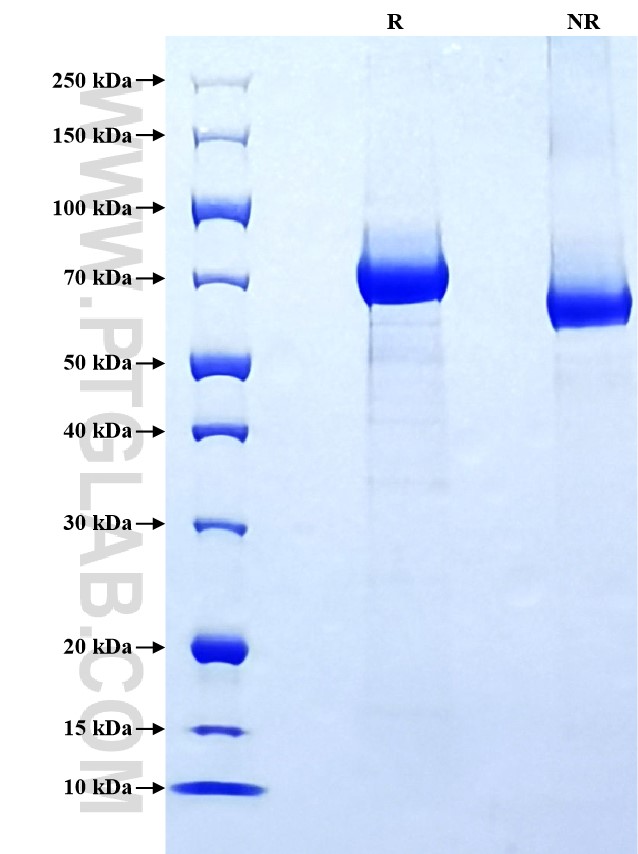Recombinant Mouse Coagulation factor II/F2 protein (His Tag)
种属
Mouse
纯度
>90 %, SDS-PAGE
标签
His Tag
生物活性
未测试
验证数据展示
产品信息
| 纯度 | >90 %, SDS-PAGE |
| 内毒素 | <0.1 EU/μg protein, LAL method |
| 生物活性 |
Not tested |
| 来源 | HEK293-derived Mouse Coagulation factor II protein Gln25-Gly618 (Accession# P19221) with a His tag at the C-terminus. |
| 基因ID | 14061 |
| 蛋白编号 | P19221 |
| 预测分子量 | 69.0 kDa |
| SDS-PAGE | 65-80 kDa, reducing (R) conditions |
| 组分 | Lyophilized from 0.22 μm filtered solution in PBS, pH 7.4. Normally 5% trehalose and 5% mannitol are added as protectants before lyophilization. |
| 复溶 | Briefly centrifuge the tube before opening. Reconstitute at 0.1-0.5 mg/mL in sterile water. |
| 储存条件 |
It is recommended that the protein be aliquoted for optimal storage. Avoid repeated freeze-thaw cycles.
|
| 运输条件 | The product is shipped at ambient temperature. Upon receipt, store it immediately at the recommended temperature. |
背景信息
Normal blood coagulation is a complex process, involving a cascade of activation of different plasma proteins, ultimately resulting in the formation of a clot, called fibrin. Coagulation Factor II (F2), also known as prothrombin or factor II, is one of the components of this chain of plasma proteins involved in blood coagulation. Prothrombin is the precursor of thrombin, which is essential in the processes of hemostasis and thrombosis. Prothrombin circulates in the bloodstream in an inactive form until an injury occurs. In response to that, prothrombin is converted to its active form, thrombin. Thrombin next converts a protein called fibrinogen into fibrin. Thrombin is also important for cell growth and division, tissue repair, and new blood vessel formation - angiogenesis.
参考文献:
1. Akhavan S, et al. (2000). Thromb Haemost. 84(6):989-97. 2. Danckwardt S, et al.(2006). Acta Haematol.115(3-4):192-7. 3.Jayandharan G, et al.(2005). Journal of thrombosis and hemostasis. 3(7):1446-53. 4.McGlennen RC, et al. (2002). Arch Pathol Lab Med.126(11):1319-25.
